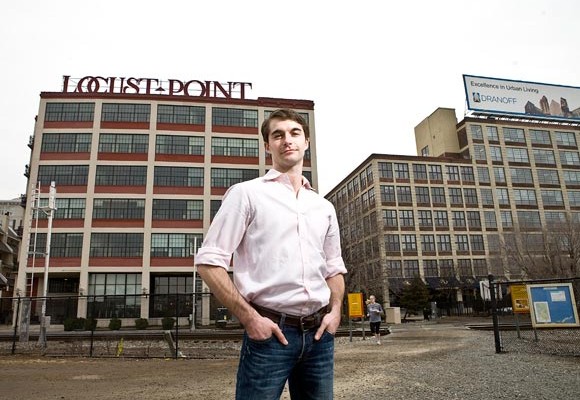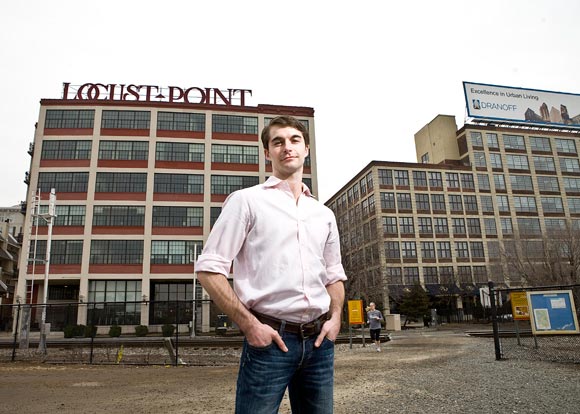 Growing up in one of Philadelphia’s more affluent areas in Center City West, Clint Randall was privileged in many ways. He was also surrounded by themes of disconnect. Riding the SEPTA Regional Rail to his high school on the Main Line, Randall was dismayed over how dire things looked at the time in West Philly–unlike the wealth and progress easily visible at the beginning and end of his daily journey to Shipley School. On weekends, he could make the short walk toward the banks of the Schuylkill River but couldn’t go much farther because 20 years ago, that area was “derelict” and a “post-industrial wasteland” that kids weren’t supposed to go near. This was before the extension to Kelly Drive was established, connecting the city to the larger Fairmount Park system and the Wissahickon Trail.
Growing up in one of Philadelphia’s more affluent areas in Center City West, Clint Randall was privileged in many ways. He was also surrounded by themes of disconnect. Riding the SEPTA Regional Rail to his high school on the Main Line, Randall was dismayed over how dire things looked at the time in West Philly–unlike the wealth and progress easily visible at the beginning and end of his daily journey to Shipley School. On weekends, he could make the short walk toward the banks of the Schuylkill River but couldn’t go much farther because 20 years ago, that area was “derelict” and a “post-industrial wasteland” that kids weren’t supposed to go near. This was before the extension to Kelly Drive was established, connecting the city to the larger Fairmount Park system and the Wissahickon Trail. 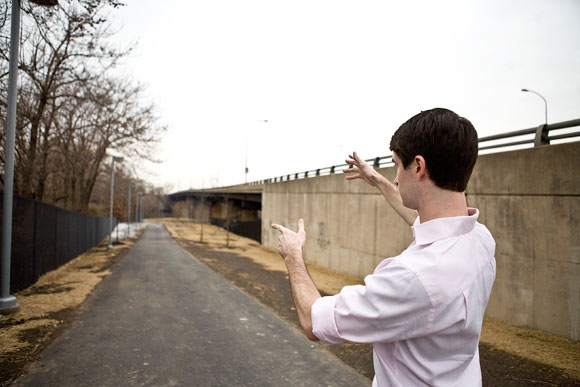 Nowadays, Randall himself has become quite the conduit. He moved back to Philly after graduating from Boston University and working for a marketing company to go to grad school for city planning at the University of Pennsylvania, and he’s now working in the City Planning office. His title: Healthy Communities Coordinator.
Nowadays, Randall himself has become quite the conduit. He moved back to Philly after graduating from Boston University and working for a marketing company to go to grad school for city planning at the University of Pennsylvania, and he’s now working in the City Planning office. His title: Healthy Communities Coordinator.
You’re forgiven if you don’t immediately see the connection. It’s a new position created not long after Randall interned with the City Planning Commission. Randall was awarded the title last April in the new capacity–a hybrid planning-public health position. The connection that Randall was expressly hired to nourish has become something of a point of innovation for Greater Philadelphia. While city planning has deviated from its public welfare roots here and nationwide, Greater Philadelphia has recently become a leader in proactively using city and regional planning initiatives to make a positive impact on public health. The biggest opportunity–and example–is the inclusion of health-related indicators and priorities in the mammoth 25-year planning effort, Philadelphia 2035.
“I was certainly surprised to see the job notice,” says Randall, 27 and extremely grateful for the opportunity to help make such a game-changing difference and for being part of a dynamic team known as Get Healthy Philly, led by Dr. Giridhar Mallya, the Department of Public Health’s director of policy and planning. “Philly is capitalizing on the fact that there are these connections between the decisions we make in planning and the health of the people. “It presents the opportunity to deal with not only programmatic issues of health but also think of health in a more comprehensive way and how people’s environments impact health.”
“It presents the opportunity to deal with not only programmatic issues of health but also think of health in a more comprehensive way and how people’s environments impact health.”
Health Concerns Fuel Focus
Get Healthy Philly is funded by a $25.4 million, two-year federal grant from the Communities Putting Prevention to Work Initiative to decrease tobacco use and secondhand smoke exposure and promote healthy nutrition and increased physical activity. It’s a huge chunk of money because it’s a huge task. Philadelphia County has the highest prevalence of adult obesity (35.1 percent), diabetes (11.9 percent) and hypertension (33.4 percent) and the second highest prevalence of heart disease (4.5 percent) among counties containing the 10 largest U.S. cities. According to 2008 data, nearly two-thirds of adults and half of children in the county were overweight or obese.
Philly isn’t alone. Many national health indicators are trending downward, too. That’s partly why the American Planning Association has established the Planning and Community Health Research Center, one of the organization’s three research and policy institutes. San Francisco is among a short list of cities making the connection between health and planning, and Randall got an up-close look when he did a week training with the San Francisco Public Health Department early on in his employment. While there, Randall learned about the city’s use of Health Impact Assessments to determine health considerations in policy making.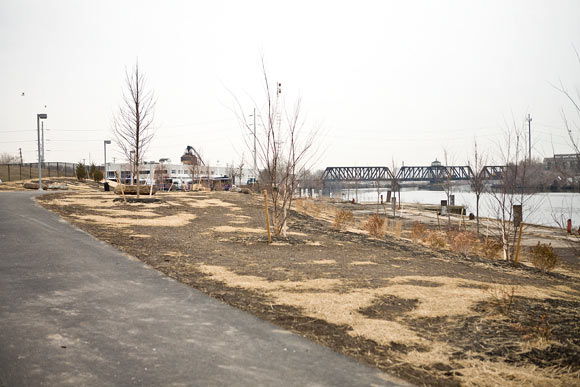 “What differentiates us is that we’re working on it at the beginning to assess the health impacts as we go,” says Randall.
“What differentiates us is that we’re working on it at the beginning to assess the health impacts as we go,” says Randall.
Philadelphia 2035 lays out major goals, like improving neighborhood livability, and includes objectives and strategies to accomplish them. There are six topic areas in Randall’s contribution, a companion piece dubbed the Healthier City Report, that highlight strong evidence-based connections to health:
* Neighborhood Centers: Re-investing in key assets of neighborhoods to improve people’s ability to access goods, services, transportation, and employment and daily physical activity.
* Transit-Oriented Development: Promoting higher density development around train stations allows residents to use cars less, breathe healthier air and be more physically active.
* New & Improved Transit Services: Improving rapid transit in parts of the city that don’t have it.
* Healthy Food Access: A variety of strategies to increase access in underserved neighborhoods.
* Open Space Access: Increasing opportunities for residents to utilize trails, parks and green spaces.
* Active Transportation Infrastructure: Investing in opportunities to navigate the city without a car and building it into residents’ daily routines, like connecting the waterfront trail network to neighborhoods.
Food at the Forefront
In this mix of short-term and large-scale ideas, one of the major strategies to improve healthy food access is to locate farmers markets and healthy food vendors within or adjacent to SEPTA stations. It’s worth mentioning because of the synergy–SEPTA just released its own sustainability plan that includes a similar concept. “We’ve been talking about this ahead of time and we’re aligning goals and objectives,” says Randall. Through Get Healthy Philly, the Food Trust and the Health Department, there is funding to open 10 farmers markets between now and 2012 (four are already open in places that historically lack access to healthy food–Point Breeze, Grays Ferry, Norris Square and South Philly at Broad and Ritner).
Just last week, the Delaware Valley Regional Planning Commission (DVRPC) released its own plan to strengthen the region’s food system, including more than 50 recommendations in “Eating Here: Greater Philadelphia’s Food System Plan.” It also announced $500,000 in grants to help implement the plan, to organizations like Greensgrow Farms, Weavers Way, and The Common Market. DVRPC is also at the forefront in this type of planning–its efforts were cited as innovative by an APA report from 2009 that highlighted nationwide impacts of food access planning. The recent plan includes recommendations according to six values, including collaboration, farming, fairness, sustainability, health and economic development. Collaboration is the overriding theme.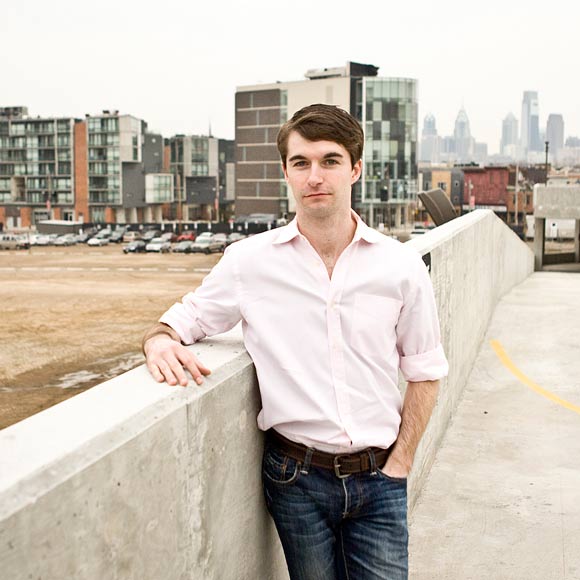 “The whole reason planning exists is for human health and welfare, and it has gotten away from that in the last 50 years,” says DVRPC Senior Environmental Planner Alison Hastings. “Existing environments have, in too many cases, had a detrimental impact on the general population’s health.”
“The whole reason planning exists is for human health and welfare, and it has gotten away from that in the last 50 years,” says DVRPC Senior Environmental Planner Alison Hastings. “Existing environments have, in too many cases, had a detrimental impact on the general population’s health.”
Initially, Hastings says, DVRPC was approaching the plan focused on land use, economic development, and energy, but many of the stakeholders involved in the process were involved in increasing access, so ‘fairness’ was added to the plan.
“Planning is reliant on implementers, and you need them as collaborators in the planning process from the get-go,” Hastings says.
The Great Outdoors
Austin, Texas native Jeff Knowles went to school with Randall at Penn and has since joined the Pennsylvania Environmental Council (PEC) as a project manager. PEC’s work on the 58th Street Greenway–a major initiative in Southwest Philly, where obesity and heart disease run rampant–targets increased opportunities for bicyclists, pedestrians, outdoor exercise, and community safety. The trail has been under design for about 18 months, ground is expected to be broken in the summer and the green corridor that connects some of the neighborhood’s healthier assets (like Bartram’s Garden and Cobbs Creek Trail) should be complete by this time next year.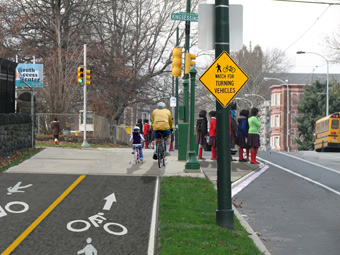 The project represents a portion of the $23 million in federal TIGER grant funding and $10 million in matching grants from the William Penn Foundation directed toward improving physical infrastructure related to bicycle/pedestrian trails in Philadelphia and South Jersey. Despite such a massive financial injection, it has been a challenge, Knowles says, to get major funders to look at environmental organizations through their widening public health lens. That’s largely why PEC has spent significant time and energy working with local partners to mobilize the community and building social connections to the 58th Street Greenway. Knowles says Randall has helped PEC develop a “walkability audit,” a tool to get children and residents to take a scientific look at their neighborhood to determine which streets and sidewalks need attention and engage people who otherwise might not be able to participate in the planning process.
The project represents a portion of the $23 million in federal TIGER grant funding and $10 million in matching grants from the William Penn Foundation directed toward improving physical infrastructure related to bicycle/pedestrian trails in Philadelphia and South Jersey. Despite such a massive financial injection, it has been a challenge, Knowles says, to get major funders to look at environmental organizations through their widening public health lens. That’s largely why PEC has spent significant time and energy working with local partners to mobilize the community and building social connections to the 58th Street Greenway. Knowles says Randall has helped PEC develop a “walkability audit,” a tool to get children and residents to take a scientific look at their neighborhood to determine which streets and sidewalks need attention and engage people who otherwise might not be able to participate in the planning process.
“Carbon and global climate change is certainly an issue that’s important but when you get down to people’s lives and livelihoods, how does (our work) improve one’s neighborhood and life?” says Knowles. “If you can demonstrate that and also address global concerns, then the job is complete.”
Randall says the coming year should see a plethora of shovels in the ground for publicly funded projects that will support the region’s health. The eye-opening train rides Randall used to take as a youngster will start to look different to today’s schoolchildren, he believes, as connections become easier to see.
“(Riding the train) raised a lot of questions, like why do our cities look one way and suburbs look another way, how did things get this way and how do we make them better,” he says. “Growing up in Philadelphia has everything to do with my interest in making it healthier.”
Joe Petrucci is managing editor of Keystone Edge. Send feedback here.
PHOTOS:
Healthy Communities Coordinator Clint Randall
Randall showing progress made under the Grays Ferry Bridge, where a reclaimed brownfield is now a new section of the Schuylkill River trail
Randall checking out the existing Swing bridge at the Grays Ferry project
Open space project in progress at Grays Ferry
Panoramic showing the juxtaposition between old and new Northern Liberties, where mixed-use development highlights public transportation, walkability and nearby healthy foods and recreation
Randall atop the new shopping center at 2nd and Girard
Rendering of completed 58th Street Greenway (submitted by Pennsylvania Environmental Council)
All photographs by MICHAEL PERSICO unless noted.
